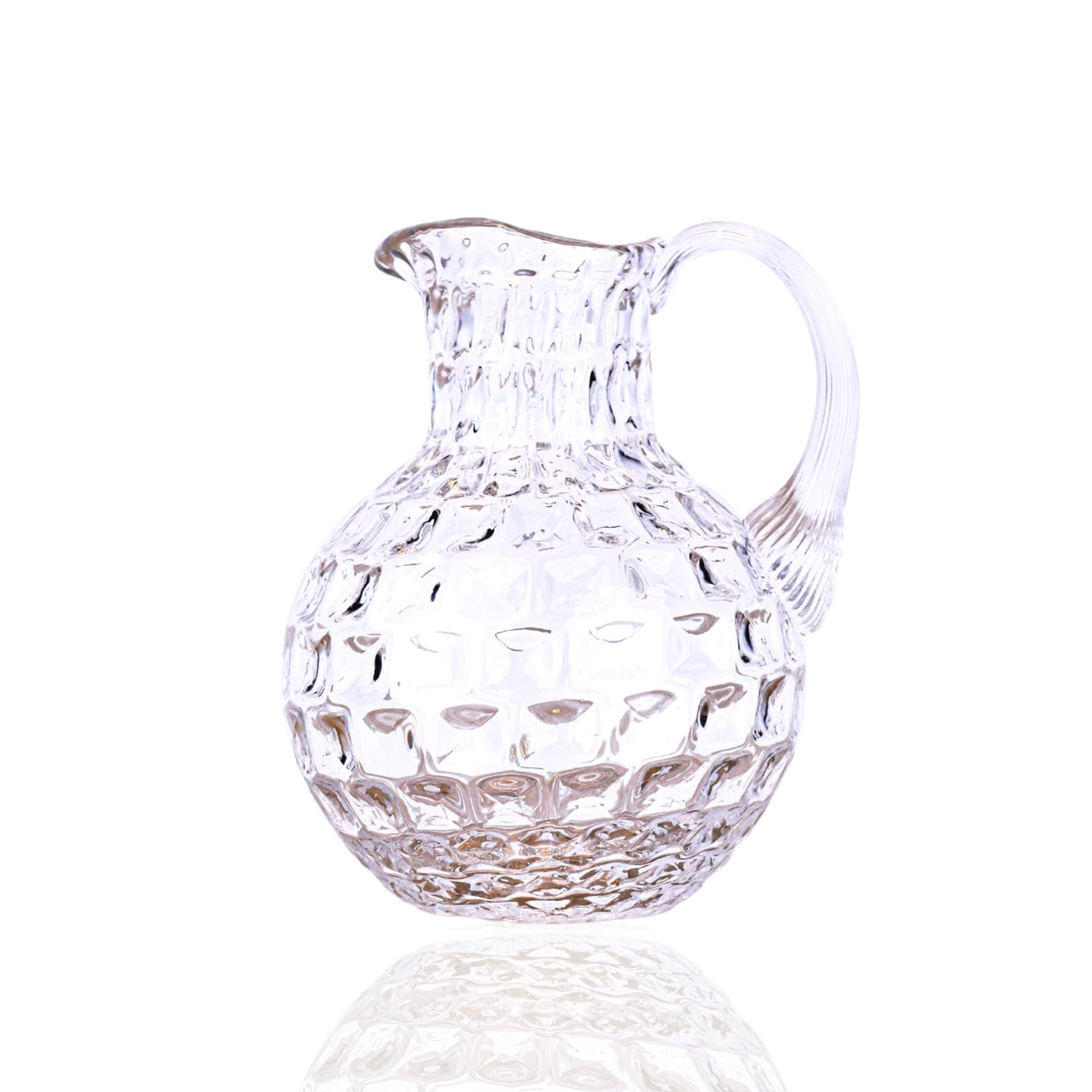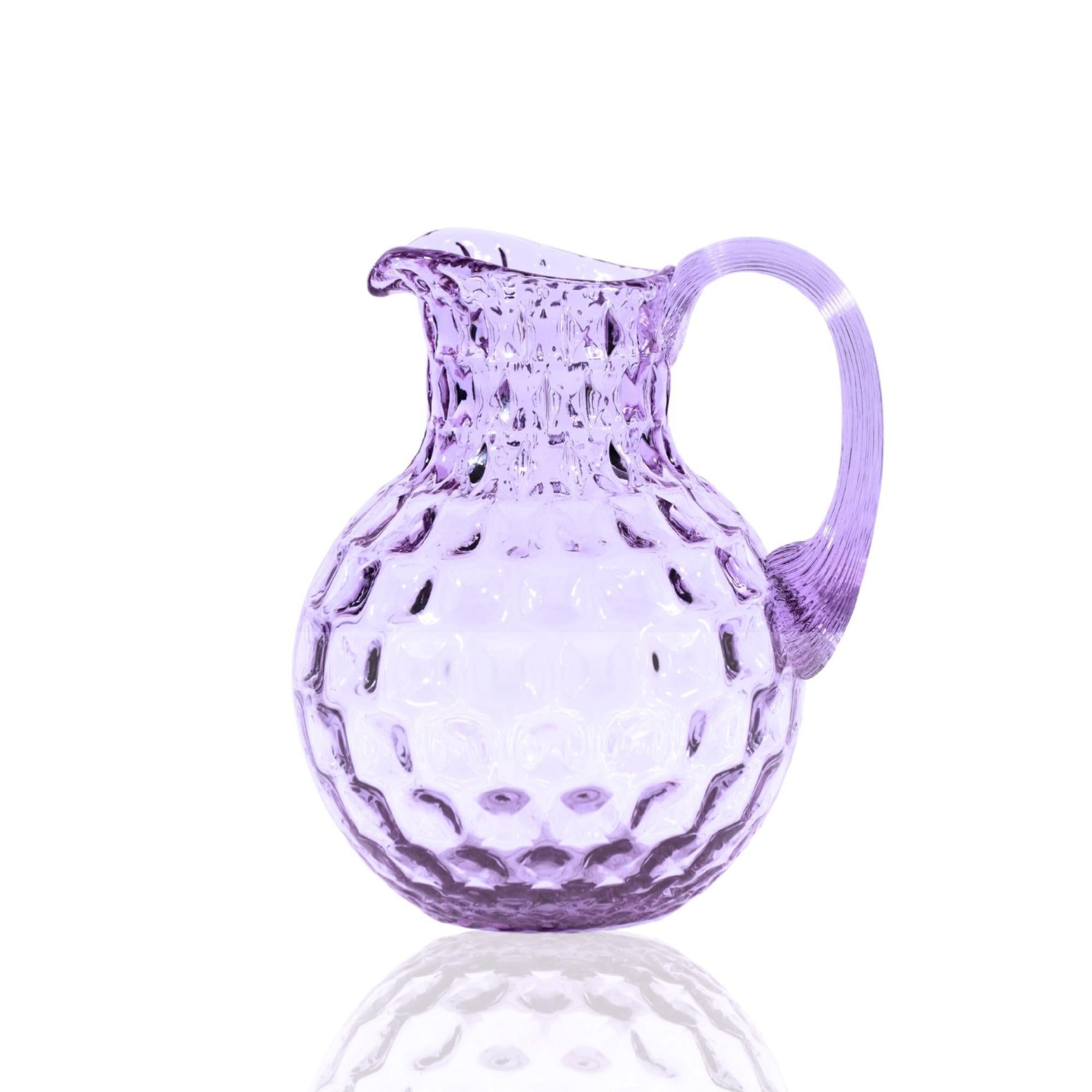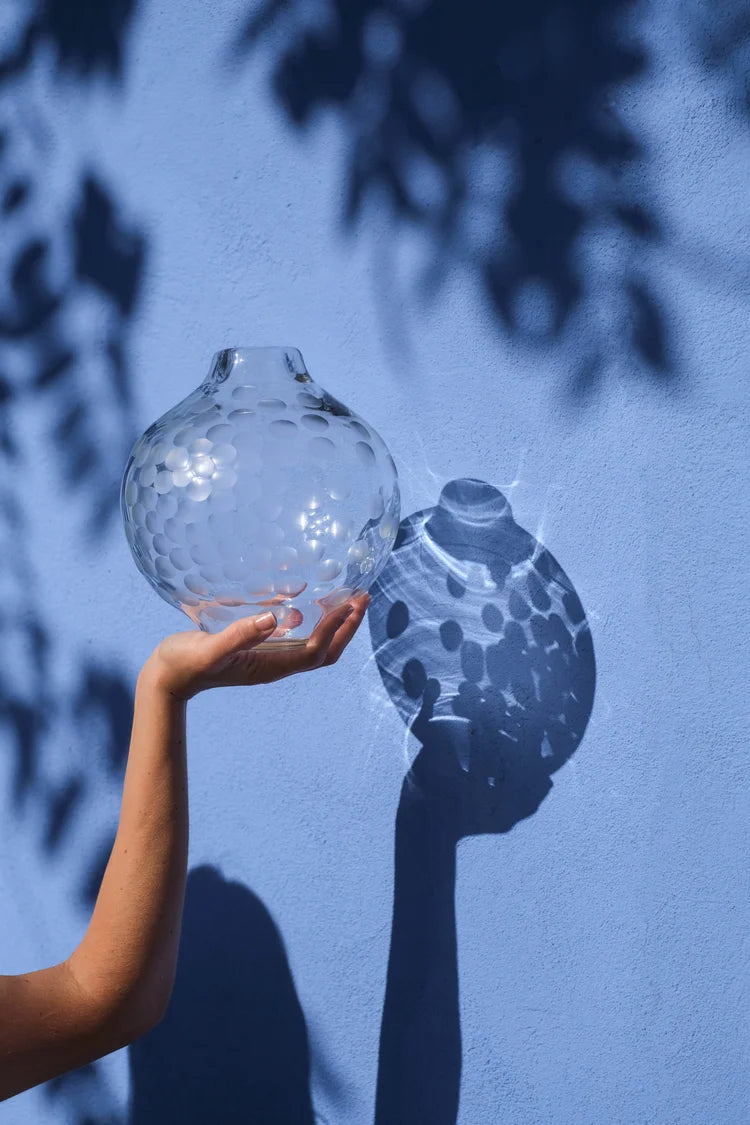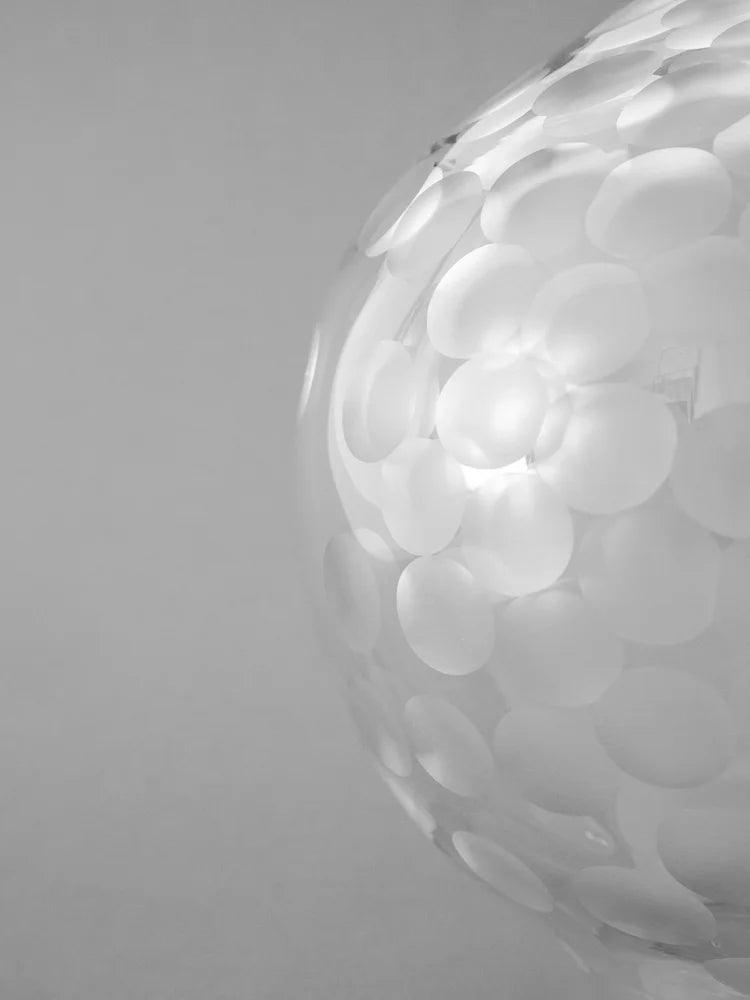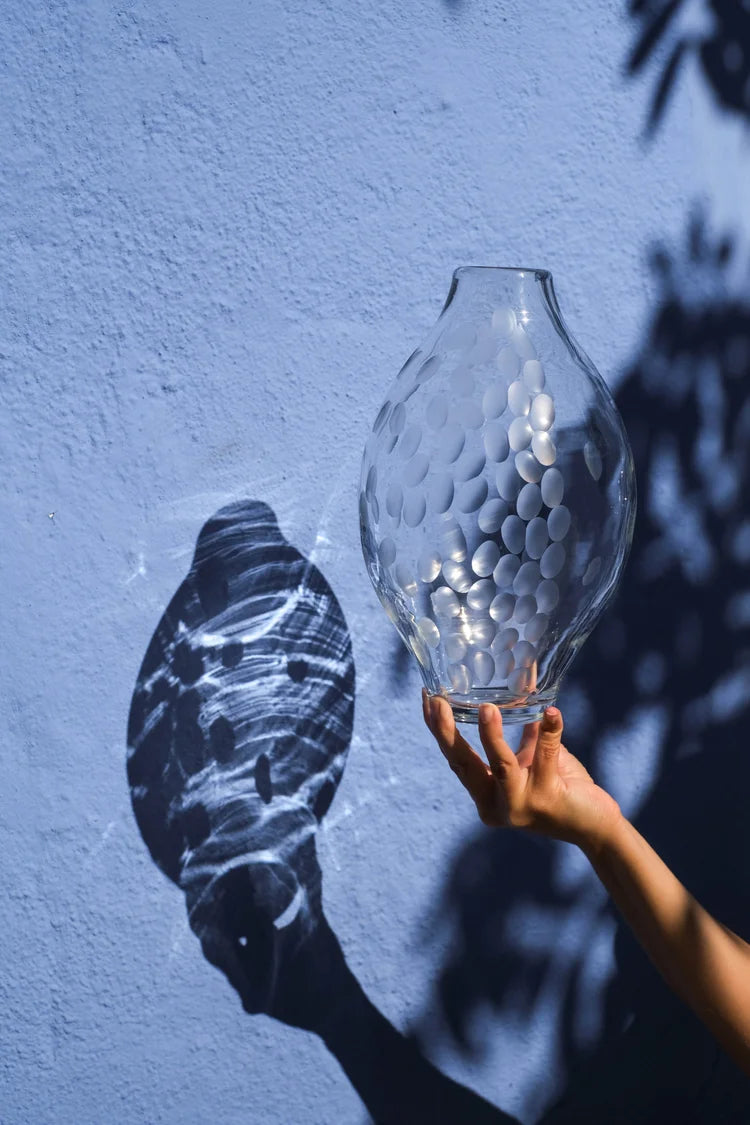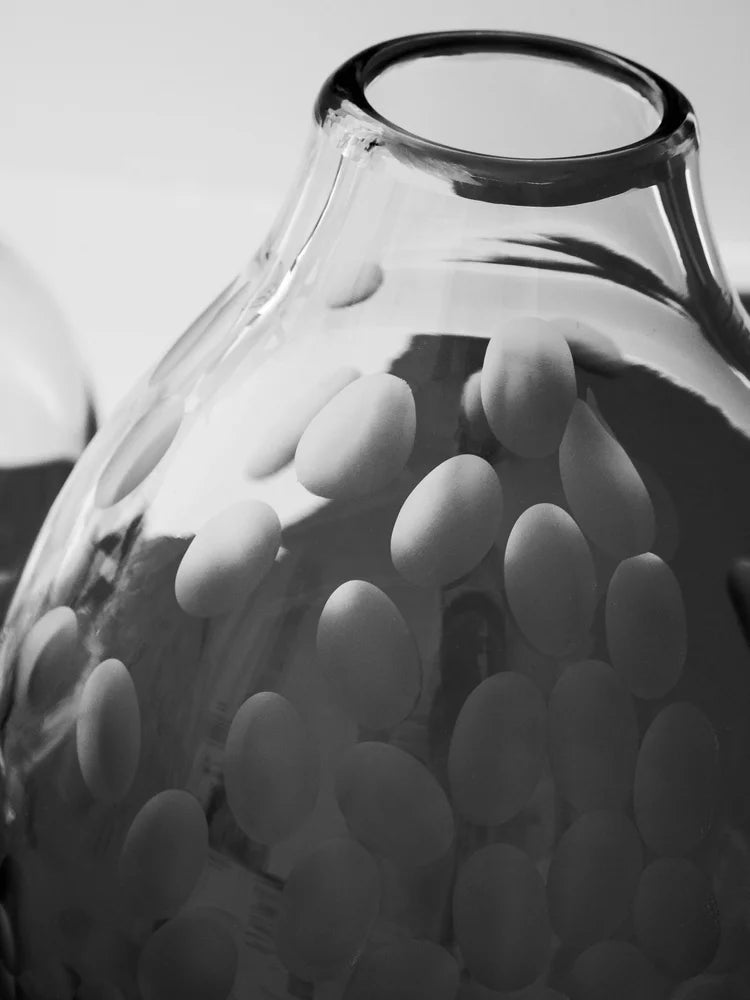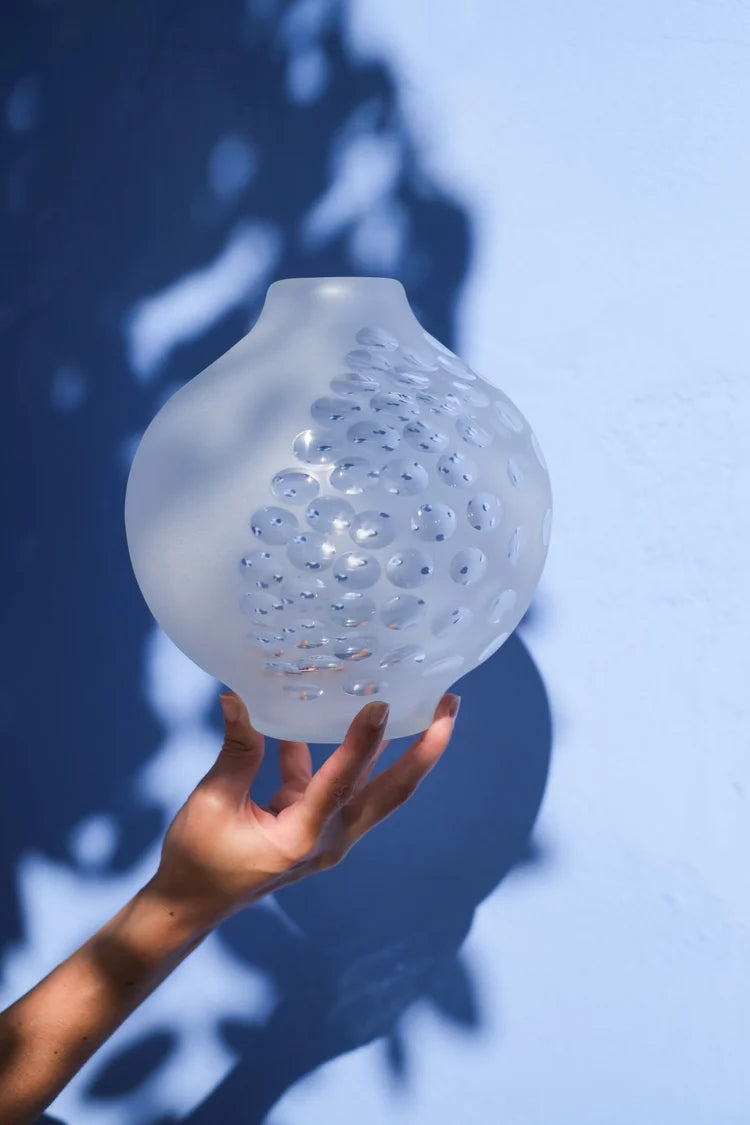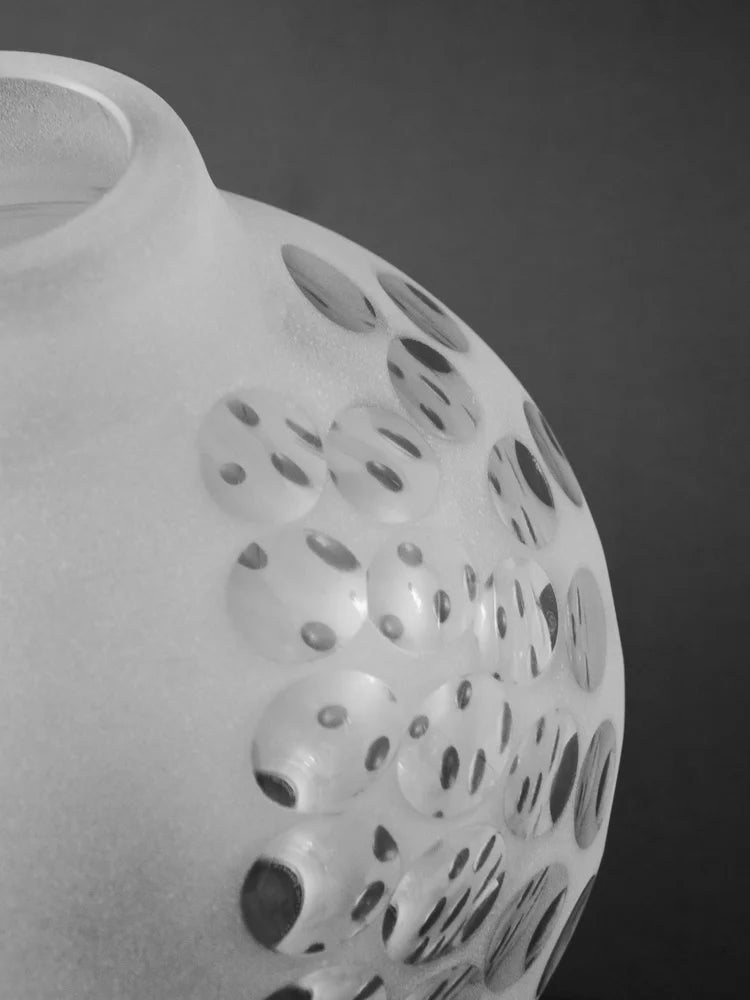Glass Mastery: Techniques That Define Excellence
Why Glass Mastery Still Matters
Glass is the most paradoxical material in the home: fluid at 2,000 degrees, yet strong enough to carry a lifetime of celebrations. It captures light, color, and the quiet ritual of daily living. At Trove Gallery, we spotlight glass not simply as decor, but as a record of mastery—each piece a collaboration between earth, flame, and human touch. In this material story, we walk through core glass techniques—how glass is made, shaped, cooled, and finished—then meet the makers who carry those traditions forward. Along the way, you’ll discover collectible pieces from our curators’ shortlist, and see why choosing well-made glass is an inspired, enduring act.
The Alchemy of Sand and Fire: How Glass Is Made
At its core, glass is a carefully balanced recipe. Silica sand forms the backbone; stabilizers and fluxes are added to help it melt and harden predictably. Heated to a syrupy glow, the batch becomes a honey-like pool that artisans gather on a blowpipe or punty. From there, choice and gesture enter the conversation: will the piece be blown thin and luminous, or shaped thick to enhance optical depth? The answer anchors the final look and feel.
Color—sometimes delicate, sometimes dramatic—can be introduced in myriad ways. Certain makers prefer a whisper of tint to let form lead, while others choreograph bold, opaque tones. You can see this tension beautifully across the sculptural silhouettes by Frantisek Jungvirt, whose series embraces different surface qualities to let color speak at distinct volumes. Consider the trio of statement vessels: the Opaque Garden Vessel ($825), the Transparent Garden Vessel ($825), and the Matte Garden Vessel ($975). Their names hint at the quiet technical choices behind each finish: a denser, more protective hue; a clear field for light play; a velvety surface that softens reflection. Same family, different mood—proof that mastery begins long before the glass is inflated.
When people ask how glass is made, they usually mean: how does it feel to wrestle with something so alive? The answer lies in rhythm. Gathering, reheating, shaping, returning to the furnace—each cycle leaves a signature on the final silhouette. A great piece doesn’t fight the material; it invites it to do what it does best: bend the light, hold the eye, and quietly endure.
Blown to Life: Techniques of the Hot Shop
The moment molten glass leaves the furnace, time matters. Every breath, every turn on the bench affects wall thickness, balance, and movement. There’s free-blowing—air introduced by mouth to give the material its initial volume—and there’s mold-blowing, where a form sets repeating pattern and texture. The best studios travel between both worlds to achieve clarity, control, and character.
Consider the hospitality-friendly grace of the Anna von Lipa aesthetic: tactile, approachable, and artful on a table. The Diamond Jug ($208) is a masterclass in everyday luxury—an inviting 68 oz pour that transforms water into a centerpiece. It’s the kind of design that reveals why glass techniques matter: controlled breath for a balanced body, precise transitions at the lip and handle, and an overall geometry that catches light across the day. When people talk about “glass pottery techniques,” they often mean the shared craft values between glass and ceramics—proportion, function, and a hand-finished soul. This jug proves that kinship.
In sculptural work, breath becomes architecture. The Trdlik Vase ($1,920) by Frantisek Jungvirt embraces volume like a slow exhale, while the aptly named Glossy Vase ($1,380) keeps surfaces sleek and reflective, perfect for rooms that dance with light. For those who favor drama, the Ruby and Gold Bloom Vase ($1,200) introduces a rich color story—an example of how hue can be used architecturally to guide the eye and define space.
Blown work must be properly annealed—cooled slowly in a kiln to relieve stress. It’s an unglamorous step, but essential to longevity. When you lift a fine jug, vase, or sculptural object and feel its poise, you’re feeling the sum of hot and cold processes in precise harmony.
Sculpted by Light: Cold Work, Cutting, and Texture
Once a piece leaves the furnace, cold-working begins. This quiet family of glass techniques—cutting, grinding, sandblasting, and polishing—turns light into a tool. Edges are tuned. Surfaces are softened. Patterns are revealed a fraction of a millimeter at a time. Cold work is where a silhouette learns to speak.
In Jungvirt’s studio practice, contrasting finishes are a language unto themselves. The Black Fleur Vase ($2,081) brings a dark, formal elegance to the table; rendered as a cool counterpart, the Snow White Fleur Matte Vase ($3,508) and the Basalt Black Fleur Matte Vase ($3,508) lean into soft-focus texture, lending a tactile quietude to strong forms. Notice how matte and gloss create different kinds of shadow; a room changes with surface temperament.
Opacity and translucency are not opposites so much as partners. The Opaque Garden Vessel reigns in reflective glare, while the Transparent Garden Vessel harnesses it—each an intentional answer to how you want light to behave at home. That question is central to glass mastery: not just what form to make, but what kind of light you want to live with.
Even in more restrained silhouettes, cold work creates refinement that you feel in use, not just in photographs. The weighted footing of a vase, the crisp transition of rim to wall, the satin touch of a sandblasted surface—these are the quiet signatures of expert finishing.
Color as a Narrative: Layering, Tone, and Visual Rhythm
Color in glass isn’t a coat of paint; it’s a dimensional presence. Depending on technique, it can be encased, diffused, or allowed to bloom at the surface. The same hue can look different in morning light versus evening—part of the material’s magic.
Some artists expand that conversation beyond vessels. In the luminous series by Catarina Pacheco, tone, edge, and luminosity become meditations on space. Her works—Light Echos I ($423), Light Echos II ($438), Light Echos III ($466), and Light Echos IV ($481)—read like a slow study of refraction. The title says it all: echoes of light, of glass, of the way color migrates as it meets a boundary. For a deeper chromatic conversation, explore Colour Conversation XII ($583), and the contemplative blues of Light Echos Indigo II ($554). Even when they aren’t vessels, these artworks share a sensibility with glass: they choreograph light and color with a rare, precise calm.
If you’re drawn to the pure chill of clarity, turn to refined minimalism with pieces like the Short Arctic Vase ($1,077) by Moser. Compact in stature but expansive in presence, it’s a study in restraint—proof that glass mastery can be quiet and still command the room.
Color is also a tool for storytelling at the table. The jewel-toned warmth of the Ruby and Gold Bloom Vase can anchor a floral composition or stand sculpturally on its own. Pair it with the lucid grace of the Diamond Jug for a table that moves from daylight brunch to candlelit dinner with ease.
Concept Meets Craft: Contemporary Perspectives and Collectability
Technique is the material, but concept is the voice. Today’s most compelling designers use time-honored methods to ask contemporary questions: What is luxury now? What does permanence mean in a changing world? How do we live with objects that are both useful and provocative?
Czech artist Eliška Janečková explores that edge with a sculptural series whose very title sparks conversation: Trophy of a Synthetic Age 1 ($4,000), Trophy of a Synthetic Age 2 ($4,500), and Trophy of a Synthetic Age 3 ($4,000). The works carry an arresting presence—calling to mind the dialogue between natural clarity and constructed modern life. They’re the kind of pieces that shift a room’s intent: less ornament, more statement.
Collectability is built on three pillars: technique, authorship, and condition. Technique tells you how and why the piece holds together; authorship places it in a lineage; condition preserves its story. Whether you’re drawn to the reflective polish of the Glossy Vase, the sculptural poise of the Trdlik Vase, or the textural quiet of the Basalt Black Fleur Matte Vase, look for work that is visually resolved from every angle. Turn the base to the light; watch how it stands, how it shadows the surface below. That’s where technique reveals itself.
For many collectors, the shared language of “glass pottery techniques” is a helpful bridge. Both disciplines value proportion, hand-finishing, and the way a piece settles into daily life. Glass adds the performance of light, and with it, a deeper conversation between object and space.
How to Choose and Care: Longevity Begins at Home
Choosing the right piece is part intuition, part intention. Start with scale: do you want a focal point or a quiet layer? The compact clarity of the Short Arctic Vase offers versatility on shelves and bedside tables. For a bolder anchor, the Black Fleur Vase or Snow White Fleur Matte Vase holds a room with sculptural gravity. If color is your language, let the Ruby and Gold Bloom Vase carry the melody, or curate a tonal conversation with Catarina Pacheco’s light-forward artworks.
When it comes to use, a few simple habits preserve clarity and finish. Hand-wash with mild soap and a soft cloth; avoid drastic temperature shifts; and store pieces with space between them to prevent subtle abrasions. For matte and satin finishes, use non-abrasive cleaners and skip polishing agents that can add unwanted sheen. And if you’re moving a piece, carry it from the body rather than the rim—especially in larger vessels where leverage can stress delicate transitions.
Finally, consider context. A table set with the Diamond Jug invites a generous pour and a luminous centerpiece, while a console anchored by the Trdlik Vase or Glossy Vase becomes a clear visual pause in a busy room. A trio of Jungvirt’s Garden Vessels—Opaque, Transparent, and Matte—creates an elegant study in surface and light. For a gallery wall that converses with your objects, pair Colour Conversation XII with Light Echos Indigo II to echo the tonal atmosphere of your space.
While we’re often asked how glass is made, the better question might be: how is it made to feel? The answer is where technique meets taste—precision in the studio, sensitivity in the home. That is glass mastery.
Meet the Makers, Explore the Collections
Each maker at Trove Gallery brings a distinct voice to time-tested methods:
- Frantisek Jungvirt: Sculptural forms, considered surfaces, and an editorial eye for color across pieces like the Black Fleur Vase, Trdlik Vase, Glossy Vase, Snow White Fleur Matte Vase, and Basalt Black Fleur Matte Vase.
- Anna von Lipa: Hospitality-forward glass with artisanal charm, exemplified by the Diamond Jug.
- Catarina Pacheco: Luminous works that map the choreography of light—Light Echos I, II, III, IV, Colour Conversation XII, and Light Echos Indigo II.
- Moser: Heritage precision distilled in contemporary forms like the Short Arctic Vase.
- Eliška Janečková: Concept-driven sculpture that balances beauty and provocation—Trophy of a Synthetic Age 1, 2, and 3.
Ready to live with pieces that turn light into design? Explore our curated glass selection and bring home work that marries enduring technique with contemporary elegance.
Call to Action: Shop the full Glass Collection, discover the Frantisek Jungvirt, Anna von Lipa, Catarina Pacheco, Moser, and Eliška Janečková maker pages, and find the piece that turns your space into its most luminous self.
